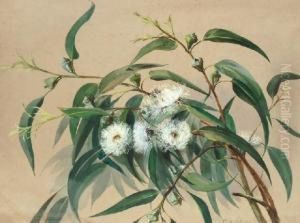G. Hofer Paintings
Gustav Hofer, an artist whose work spans the late 19th and early 20th centuries, was born in 1860 and passed away in 1941. His contributions to art, particularly within the realms of painting and printmaking, reflect the turbulent transitions and cultural shifts of his time. Hofer's early years were marked by rigorous academic training, a common practice for artists of his era, which grounded his technique in the foundational skills of drawing and composition, while also exposing him to the rich traditions of European art.
Throughout his career, Hofer navigated the evolving landscape of art movements with a distinctive approach that often melded traditional techniques with emerging styles. The late 19th century was a period of significant change in the art world, with the advent of Impressionism challenging the norms of academic painting and paving the way for modernist experiments in the early 20th century. Hofer's work from this period demonstrates his engagement with these shifts, incorporating impressionistic light and color into scenes that often retained a classical sense of form and structure.
As the 20th century progressed, Hofer's art continued to evolve, reflecting the broader upheavals and innovations of the time. The advent of World War I and the subsequent societal changes had a profound impact on the thematic and stylistic directions of his work. Themes of loss, transformation, and the human condition began to permeate his art, capturing the existential zeitgeist of the interwar period. Despite these shifts, Hofer remained committed to exploring the potential of paint as a medium, experimenting with texture, and the expressive possibilities of color.
Gustav Hofer's legacy is that of an artist who bridged the traditional and the modern, navigating the complexities of his time with a commitment to the enduring power of visual art. His work, while perhaps not as widely recognized as some of his contemporaries, offers valuable insights into the transitional period of late 19th and early 20th-century European art. Through his paintings and prints, Hofer contributed to the dialogue between past and present, highlighting the constant evolution of artistic expression.
